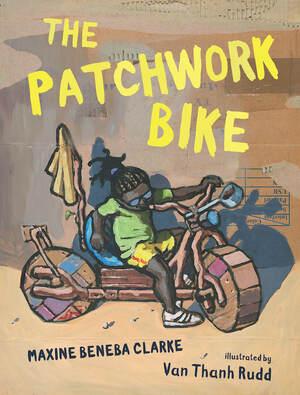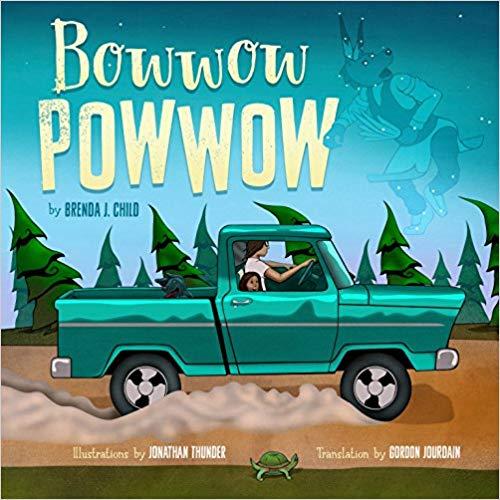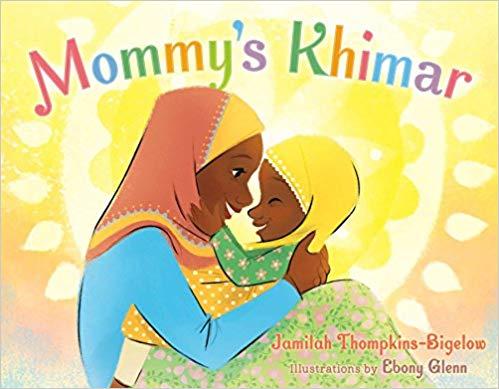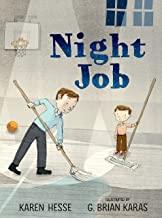
6 minute read
The Oklahoma Reader V55 N2 Fall 2019
Fall 2019: In Celebration of Families
Family isa universal experience yet the ways we experience family are myriad. The books featured in this edition not only celebrate the marvel of family, but also the many ways families are formed and nurture the people within them. Reaching across cultures and settings, ina wide variety of situational contexts, familyin these storiesbinds and launches, guides and nurtures, forgives and celebrates—and love abounds.
Advertisement
The Patchwork Bike by Maxine Beneba Clarke, illustrated by Van Thanh Rudd. (2018, Candlewick)
The spirited narrator of The Patchwork Bike joyfully describes her “mudfor-walls” home, her “crazy brothers,” her “fed up mom” and the siblings’ antics. They build sand hills to slide down and climb trees in the “no-go desert,” but best of all is the bike they have patched together from foraged parts that can, as she marvels, bumpetty-bump through the village, glide right through our mud-for-walls home carrying me and most my brothers past my fed up mom. The playful, rollicking language exudes enthusiasm and celebrates resourcefulness. The family obviously lives in poverty, but love and joy reside there as well.

Home in the Rain by Bob Graham. (2017, Candlewick)
Tenderness floods this lovely story—tenderness between a parent and a child but also a tender look at the vulnerable world around them and grace that abounds in small moments. Francie and her pregnant mother are driving from grandmother’s house to their own, but a torrential rainstorm forces them to pull off the road and wait. As they shelter, eating the picnic grandmother sent along, Francie wonders when her father will return from his faraway job and what her new baby sister will be named. Meanwhile, Graham gives us glimpses of life outside the car—a soaked boy who regrets fishing on such a day, a baby rabbit diving for cover, and a miserably wet field mouse who is lucky, too, as the rain shields him from the kestrel’s view. Back on the road, Francie and her mother find a gas station and, as life happens all around them, one perfect moment in the midst that they will remember forever.

I Really Want to See You, Grandma by Taro Gomi. (2018, Chronicle Books)

Yumi lives on a hill; Grandma lives on a mountain. One day, each gets an intense yearning to see the other so, out they go. Grandma takes a train to Yumi’s house, but the bus Yumi rides passes over it. Oh, no! Grandma hails a taxi while Yumi catches a ride with a neighbor carting a cow in a truck. But darn the luck—they pass each other again. Finally, each determinedly sets off on a scooter, meeting in the middle with unbridled joy. The illustrations speak volumes as frantic neighbors point out the problem, Yumi and Grandma’s expressions register shock, determination, and frustration, and once united, launch elatedly toward each other. Gomi’s expansive illustrations animate the simple story, a celebration of love accessible to emerging readers but enjoyable for all ages.

Uncle regales Windy Girl with stories about Objibwe traditions, including various dances and important values, such as gratitude and sharing, they celebrate. Windy Girl adapts the stories to her dog, Itchy Boy, who dances for treats and to show his enthusiasm and gratitude. When Uncle and Windy Girl attend a Powwow together, she soaks it all in—the dances, the foods, and the vibrant community—until she falls asleep under the stars, the drums ushering in an elaborate dream powwow where the celebrants are Itchy Boy and other dogs. Both art and text, from one gorgeous endpaper to another, glow with love and life, and an Objibwe translation furthers the authenticity and educational value. With all contributors connected to Objibwe culture, readers of Bowwow Powwow will come away warmed and informed.
Dra wn Togetherby Minh Lê and illustrated by Dan Santat. (2018, Disney Hyperion)

Dr awn Together is a book of few words but much heart. The initial wordless paneled spreads show a boy with a decidedly disgruntled expression being dropped at his grandfather’s house. The grandfather, who looks thrilled to see the boy, prepares two dinners—traditional Thai for himself and a hotdog for his grandson. They attempt dinner conversation—the boy’s words noted in English and the grandfather’s in Thai—to no avail. Watching television doesn’t provide common ground either. Eventually, the bored boy decides to draw, prompting his grandfather to fetch his ink and sketchbook and, in a FLASH, they begin to communicate by co-creating a world in art. Instead of panels, the pages erupt in full spread art with narration, with grandfather’s and grandson’s creations playfully sparring and intertwining on the pages.
Jul ian is a Mermaid by Jessica Love (2018, Candlewick Press)

Coming home from the pool where he swam with his Nana and her friends, Julian sees people dressed as mermaids. Julian loves mermaids! In a magical wordless spread, we see Julian imagining himself transforming into one. Back at their apartment, Nana goes to take a bath and Julian decides to dress as a mermaid, using plant fronds for hair and a gauzy curtain to create a tail. When Nana returns and surveys the mess, she looks none too pleased. She walks away and Julian waits, uncertainty on his face. Nana returns, gives Julian a set of beads to complete his costume, takes his hand and sets out down the street to where the Coney Island Mermaid Parade is about to begin. Like you, mijo, says Nana, Let’s join them. And they do. Love’s colorful illustrations pop against brown paper backgrounds and carry much of the emotional action in the text.. On the two pages where Julian is alone and transforming (in dream and then in dress), we see his actions across two-page spreads with multiple portraits of him showing sequence of events. The effect is to invite us to linger with Julian and get to know him.

When the narrator stands inside her mother’s closet, surrounded by beautiful, flowing khimars, her little hands riffling through them and her face pressed into to inhale her mother’s sweet aroma, she feels surrounded by love and possibility. She furls them, twirls them, and twists them about her, imagining she is a queen, a bird, a shooting star, a superhero. Throughout the book, her parents, grandmother (who happens to observe a different faith tradition), and women at the Mosque lovingly care for and celebrate her. Glenn’s illustrations almost literally radiate love and joy and Thompkins-Bigelow incorporates explanations of Muslim traditions without erring from the story itself.
Night Job by Karen Hesse and G. Brian Karas (2018, Candlewick Press)

A fter the sun goes down, a boy climbs on the back of his father’s motorcycle and they speed across a baybridge to a darkened school. The boy narrates what they do every night to clean the school. While his father sweeps the gym, the boy shoots hoops. In the library, the child reads to the father as he works then falls asleep on the green vinyl couch. At 4:00 a.m. the father wakes him for the chilly ride back across the bay to home. Karas’s blue and gray scenes strategically splashed with light offer a sense of mystery while Hesse’s direct but poetic text evokes every sense: the smell of old fish over the bay and lilacs at the school door, the echo of the basketball in an empty gym and the swoosh of the broom down the hall, the crisp cold air from the back of the motorcycle and, most important, the warmth of a sleepy embrace between father and son as day dawns and they fall asleep.

Suzii Parsons believes that books truly matter in the lives of young people. She is the Jacques Munroe Professor of Reading and Literacy at Oklahoma State University. You can contact Dr. Parsons at sue.parsons@okstate.edu.










